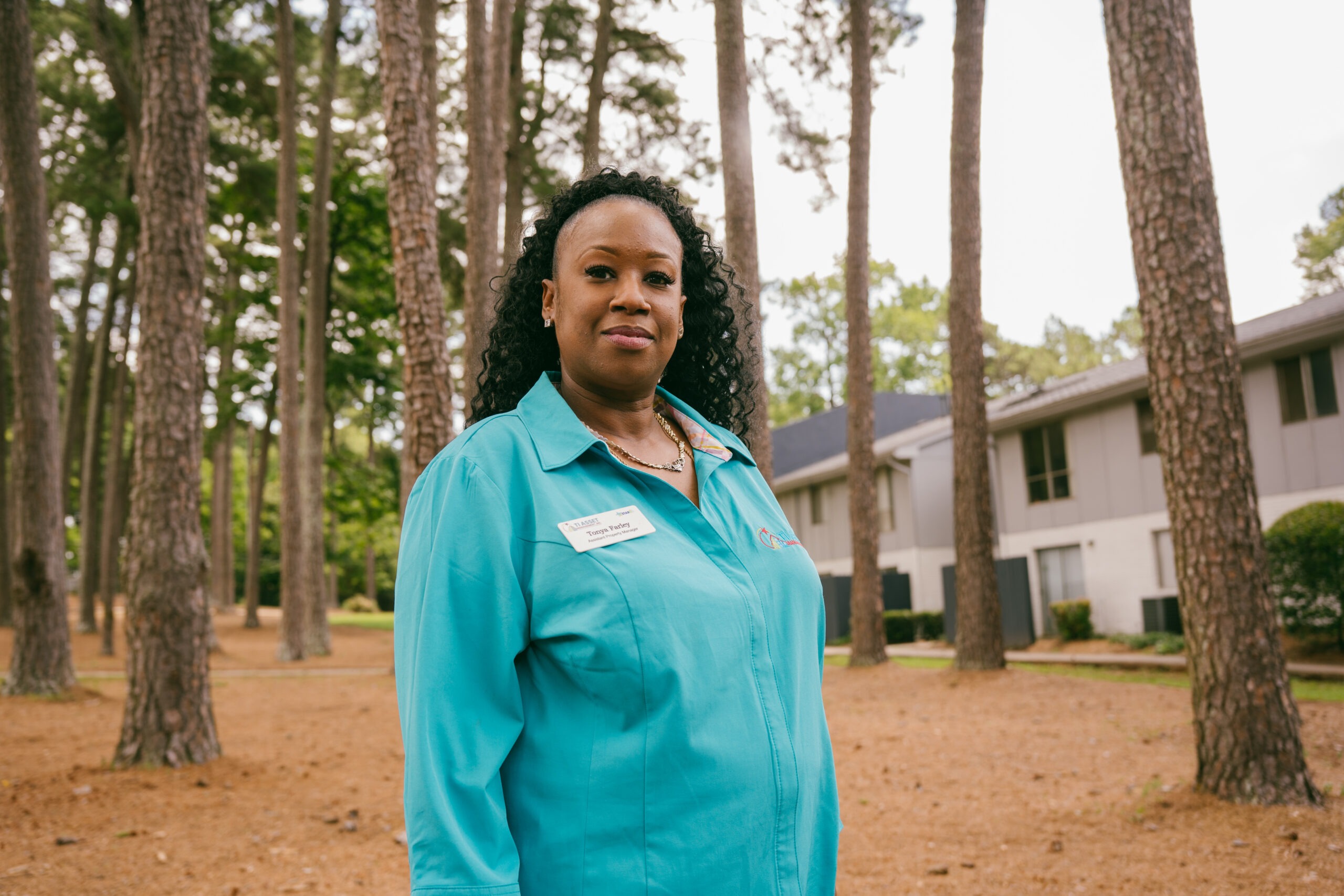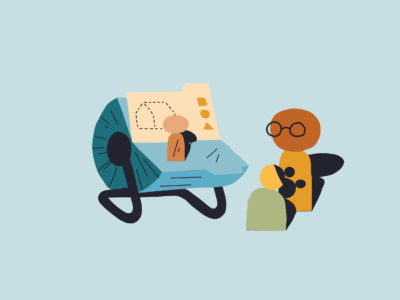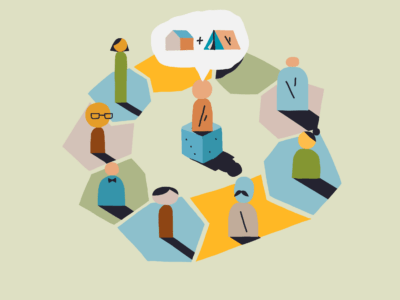Our Aim
By 2026, communities will have tools and practices in place to close housing supply gaps that perpetuate homelessness.
Milestones
- 1,335 affordable homes acquired and connected to local homeless response systems, through a combination of social impact investing and fundraising.
- 12 properties that preserve workforce housing and reduce homelessness.
- Six markets impacted by this new approach to creating an integrated housing system that prevents and ends homelessness.
Approach
A wide range of investors — including individuals, health systems, philanthropies, and banks — have committed millions to acquire affordable homes to help communities solve veteran and chronic homelessness.
This investment model demonstrates how existing apartment buildings can become key elements of a community’s strategy for preventing and reducing homelessness. Using social impact capital to acquire properties with dozens or hundreds of apartments, the fund makes homes available to people experiencing homelessness as there is a natural turnover of apartments while maintaining badly needed workforce housing.
Compared to housing built through federal Low-Income Housing Tax Credits, which can take years to complete, this social impact/acquisition model can deliver housing within months at less cost and greater flexibility than new construction.
The fund is one example of the ways in which Community Solutions collaborates with community teams to test alternative strategies for expanding access to housing.
This unique model brings housing directly to local homelessness response teams.
Using their by-name data, community partners can quickly link people experiencing homelessness with apartments and any assistance needed. Community Solutions supports the local team in coordinating the work of multiple agencies to ensure a rapid move-in and successful tenancy.
Ultimately, as apartments turnover, each building will contain a 50/50 mix of homes for individuals exiting homelessness and affordable, workforce housing.

Our Property Management Plus model (PM+) strengthens the role of property management in tenant success.
Private landlords and property managers are essential parts of a community’s housing system, but rarely have they been engaged as partners in the work of preventing and reducing homelessness.
Our Property Management Plus model is filling this void. It is a framework for redefining the role of the landlord/property manager as part of the community’s civic infrastructure, and equipping them to assist tenants who may be struggling and to accept as tenants individuals transitioning from homelessness. We have introduced PM+ in fund properties in nine markets, working with third-party property managers to make tenant success a core element of their job. Simultaneously, we are working with local continuums of care to educate their housing placement and case management staff on how to support landlords when tenants are violating their leases.
In 2024, we will make PM+ training available beyond fund properties to independent landlords and property managers in targeted communities toward fundamentally changing the relationship between landlords and vulnerable tenants.
Progress
2023 PROPERTY ACQUISITIONS
- The Park at Ferentino, 216 homes, Charlotte, North Carolina
- Villager Apartments, 40 homes, Jacksonville, Florida
- The Loop at Lamar, 138 homes, Metro Denver, Colorado
- The Avalon Apartments, 117 homes, Phoenix, Arizona
PREVIOUS ACQUISITIONS INCLUDE:
- The Mayflower, 65 homes, Baltimore, Maryland
- Caroline Village, 93 homes, Jacksonville, Florida
- Avon North, 63 homes, Metro Denver, Colorado
- Avon South, 36 homes, Metro Denver, Colorado
- Park 16, 60 homes, Metro Denver, Colorado
- French Courtyard, 42 homes, Jacksonville, Florida
- Glastonbury Woods, 144 homes, Nashville, Tennessee
- Centra Villa, 132 homes, Atlanta, Georgia
- Santa Fe Suites, 123 homes, Santa Fe, New Mexico
- The Abrigo Apartments, 66 homes, Metro Denver, Colorado
We continued to roll out our enhanced property management model.
We are implementing Property Management Plus in all Community Solutions housing to:
- Ensure that prospective tenants are being matched to any support services they may require by forging strong relationships between the on-site manager, the Continuum of Care, VA, and other case management agencies.
- Create a network of trusted community resources to benefit tenants.
- Promote health and well-being through partnerships with healthcare providers, including local VA Medical Centers.
- Provide a safe and positive environment that aligns the needs of tenants and landlords.
- Maintain the physical environment to a high standard.
We demonstrate strategies for converting shelters to permanent housing.
In Washington, D.C., and Detroit, we are working with local operators to demonstrate replicable processes for repurposing shelters and transitional housing facilities into permanent homes.
In particular, as the number of veterans experiencing homelessness decreases in many communities, facilities built as dorm-style shelters can be given a new life as permanent homes and efficiently add to the supply of homes available to veterans and others who are experiencing homelessness. We are prototyping model approaches for reusing these properties in Detroit and Washington, D.C., and figuring out the regulatory, design, financial, and operating issues involved to prepare open-source guidance for communities able to seize these opportunities to create homes.
Challenges and Learnings
Balancing short-term emergency shelter needs with investments in sustainable solutions to homelessness.
Nationally, the number of people experiencing homelessness for the first time was estimated to have risen 30% from 2020 to 2022. A wave of evictions following the pandemic moratorium and rising housing costs contributed to this alarming trend.
Major cities face deficits of tens of thousands of homes, a stark reality reflected in unsheltered homelessness, which increased by more than 10% between 2022-2023.
Even in communities with higher vacancy rates, people experiencing homelessness struggle to find homes:
- Many landlords don’t accept rental subsidies and automatically screen out housing seekers with poor credit, criminal histories, or evictions.
- Federal rental vouchers are not available for all who need help paying the rent, and don’t match up with rising costs.
- The production of new housing is slow and costly. Strict zoning, building, and occupancy regulations stand in the way of developing deeply affordable housing.
In spite of these challenges, communities are matching record numbers of people experiencing homelessness with homes — but struggling with the increasing numbers of individuals newly entering homelessness.
Shelters are intended as just a first step toward housing rather than an end solution. Communities have increased beds, expanded hours, and utilized COVID-relief funds to increase capacity. Some have leased hotels, paid for motel stays, or experimented with alternatives like tiny home villages.
While shelters provide temporary refuge, the shortage of housing puts a ceiling on solving homelessness.
The crisis is such that bipartisan, pro-housing legislation has been introduced in many states, which has spurred innovations in building construction, housing finance, and living arrangements. Community Solutions is connecting these opportunities with Built for Zero communities.

Low-barrier shelters
Low-barrier shelters are an important short-term option for people experiencing homelessness. They provide safe accommodation without prerequisites like sobriety or background checks that have historically deterred people from seeking help. Services may include assistance with finding long-term housing, health care, counseling, job training, and storage for belongings.
The Avivo Village in Minneapolis is made up of tiny homes that serve as temporary shelter, mainly for those who identify as Native American. It has helped 146 people into long-term homes since opening in 2020. Its indoor, cold-weather-proof design has been so successful that additional tiny homes are planned.
Efforts to expand access to affordable housing are primarily through the use of existing housing stock.
Communities are influencing private landlords through outreach and education efforts, financial incentives, and by mitigating landlords’ concerns about renting to people with experience of homelessness and with government rental subsidies.
In Nashville, the public-private Low Barrier Housing Collective offers landlords incentives like generous sign-on and lease-up bonuses, guaranteed funds that provide additional coverage for any damages to apartments, as well as lost rent reimbursement. These funds also pay for support services for tenants who need assistance to meet their responsibilities. In Oregon, Multnomah County offered landlords 12-month rent guarantees, payments to hold vacant units, a landlord hotline, and extra damage coverage. More than 200 people were housed as a result.
Efforts to add new units through development and renovation are small-scale and infrequent.
A few communities are undertaking efforts that modestly increase their affordable housing supply by acquiring existing properties and converting them into new affordable units.
Development of new housing at a significant scale is limited.
To meet substantial demand, most communities require new housing at all levels of affordability.
Communities need supportive local and state policies that remove barriers to development, such as highly restrictive zoning, building code, and occupancy rules. It will also necessitate mobilizing public and private investment and prioritizing new housing resources for people currently or at risk of experiencing homelessness.
Read more from our 2023 Impact and Learning Report

The future we can build together

Our path toward a tipping point

Helping communities solve homelessness

Supporting equitable homeless response systems

Solving key data and collaboration challenges







